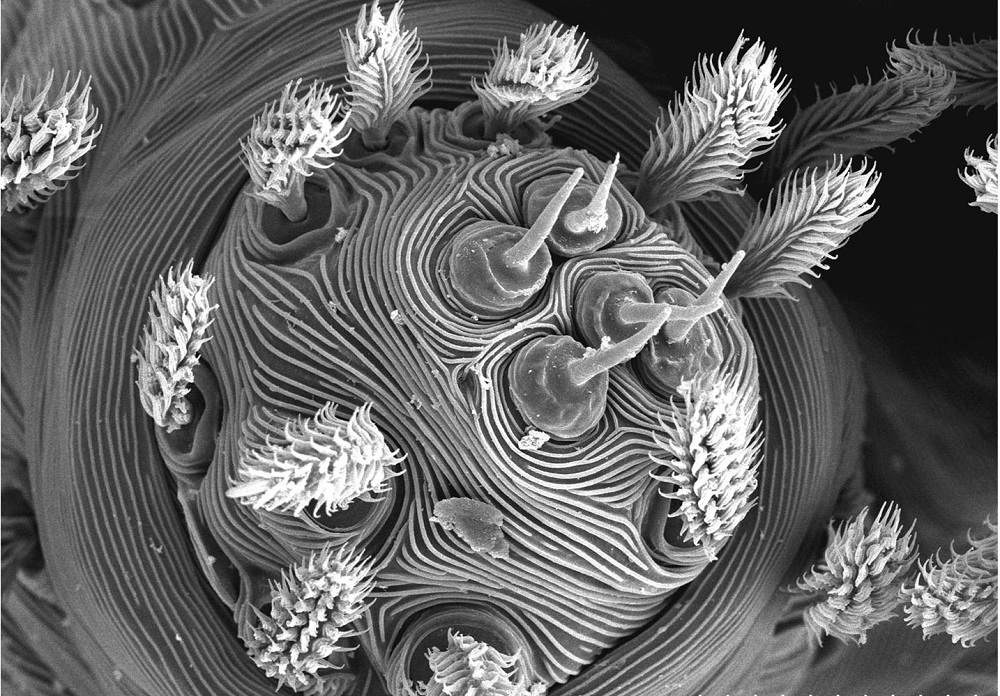New Goblin Spiders Sure Can Spin

This Research in Action article was provided to LiveScience in partnership with the National Science Foundation.
This posterior lateral spinneret, a silk-spinning organ of a spider, features frond-like setae and whorls of exoskeleton. It belongs to a female Stenoops peckorum, a newly discovered species of goblin spider from southern Florida.
This species was among 17 new species of goblin spider discovered in 2010 by Norman Platnick, curator emeritus in the Division of Invertebrate Zoology at the American Museum of Natural History.
Despite their fearsome name, goblin spiders are tiny. They tend to be less than 2 millimeters in length. The spinneret pictured above is approximately 30 micrometers across, roughly the diameter of a thin strand of hair.
The five protrusions at the center of the spinneret are spigots that produce a single type of spider silk. The silk, sometimes in combination with silk from other spinnerets, can be used in any number of ways, including reproduction or navigation, but not for a conventional prey-trapping spider web.
"All spiders do make silk, they just don't always use it to catch food," said Platnick. Instead, goblin spiders hunt down and devour whatever small insects they can catch.
Platnick's discovery opens the door for future research on goblin spiders. "Most aspects of their biology have not been explored at all," said Platnick.
Get the world’s most fascinating discoveries delivered straight to your inbox.
The study was partially funded by the National Science Foundation as part of the goblin spider (Oonopidae) Planetary Biodiversity Inventory project.
Any opinions, findings, and conclusions or recommendations expressed in this material are those of the author and do not necessarily reflect the views of the National Science Foundation. See the Research in Action archive.


